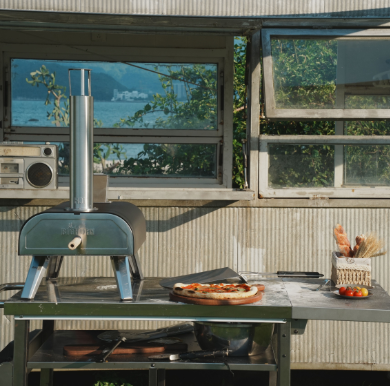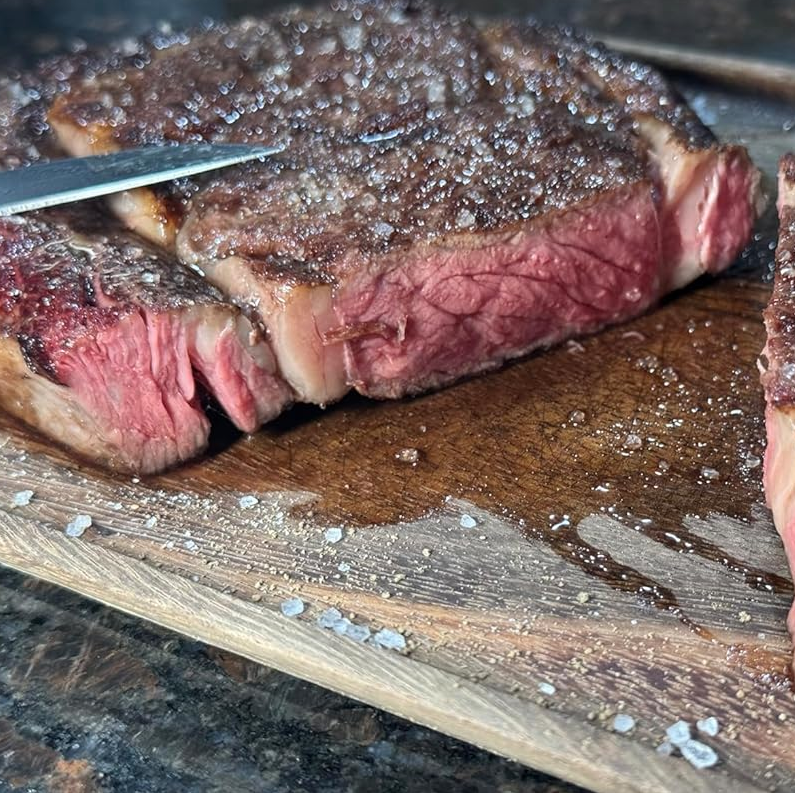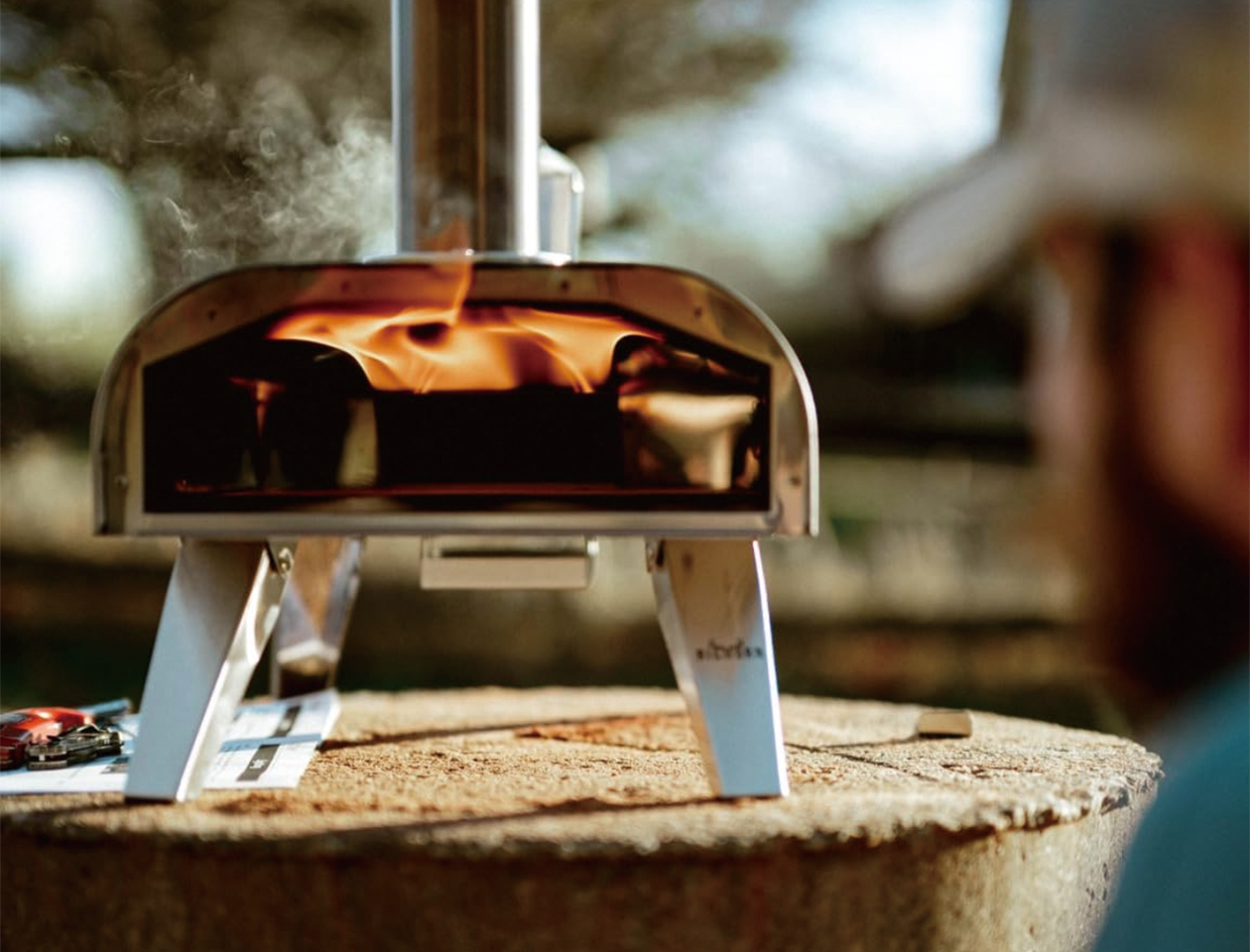We’ve all been there. You plan a perfect Friday night pizza party, but your oven takes two hours to heat up. By the time it’s ready, your guests have gone home hungry, and you’re left wondering if this whole pellet pizza oven thing is worth the trouble.
It absolutely is. Most people accidentally waste 30-60 minutes every time they fire up their oven simply because they don't know the fundamentals. Let's fix that so it never happens again.
The Short Answer: How Long You Should Expect to Wait
Most decent pellet pizza ovens get up to cooking temperature in 15-20 minutes. If you're aiming for that perfect, leopard-spotted Neapolitan crust at 850−950°F (450−510°C), here’s a realistic timeline:
| Heat-Up Time | Oven Temperature | Perfect For |
| 15 minutes | 575°F (300°C) | Focaccia, bread |
| 20 minutes | 750°F (400°C) | NY-style pizza |
| 30 minutes | 875°F (475°C) | Authentic Neapolitan |
Beginner tip: These are the times it takes for the oven to get hot. Once it's at temperature, a Neapolitan pizza will cook in just 60-90 seconds! Also, the very first cook of the day always takes the longest. Once your oven has been hot, it holds onto that warmth, making the next heat-up much faster.
Why Some Ovens Are Faster Than Others
Ever wonder why your buddy's oven is ready in a flash while yours takes its sweet time? It's not magic—it's all about how the oven is built.
Size and Material
A big, heavy-duty oven with thick walls and a stone floor simply has more stuff to heat up. It's like heating a huge cast iron pot versus a small coffee mug. A compact 12-inch oven might be ready in 12 minutes, while a beefy 20-inch model could need 25 minutes or more. The upside? That heavy oven will hold its heat like a champ once it's hot.
Insulation
Think of insulation as a good winter coat for your oven. It keeps the heat trapped inside where you need it. Ovens with premium, multi-layer ceramic fiber insulation can heat up 30-40% faster and use way less fuel because they're not constantly losing heat to the outside air.
Airflow
A fire needs to breathe. Good ventilation, with a proper chimney and an adjustable damper, lets you control the airflow. This helps the pellets burn hot and efficiently. If you're getting tons of smoke or the temperature is struggling to climb, you probably have an airflow problem.
Door Seal
A leaky door is a heat killer. Even tiny gaps let precious heat pour out, forcing your oven to work longer and harder. When your oven is hot, you shouldn't be able to see any light peeking through the edges of the door.
Your Choice of Pellets Matters More Than You Think
Don't just grab the cheapest bag of pellets. The right fuel can dramatically speed up your pellet pizza oven heating time.
Hardwood vs. Softwood
It all comes down to energy density. Hardwoods are denser and pack more of a punch.
| Pellet Type | Energy Content (BTU/lb) | Heat-Up Speed | Best For |
| Hardwood (oak, hickory) | 8,500 | Faster | Pizza Ovens |
| Softwood (pine, fir) | 7,000 | Slower | General Heating |
In simple terms, hardwood pellets burn hotter and faster, getting your oven to pizza temperature much more quickly.
Moisture: The Performance Killer
Pellets with more than 6% moisture are your enemy. When they burn, the oven first has to waste energy boiling off that water before it can create useful heat. This leads to a smoky, smoldering fire that struggles to get hot.
Signs your pellets are too wet
- They crumble easily in your hand.
- They produce a lot of thick smoke but not much flame.
- They take forever to light.
Always store your pellets in an airtight container (like a plastic bucket with a good lid) in a dry place. It's often smarter to buy smaller bags more often than letting a huge bag sit around soaking up moisture from the air.
How Weather Can Mess With Your Pizza Night
Don't forget to check the forecast. Mother Nature has a big say in your oven's performance.
The Cold
Here's a simple rule: for every 20°F it gets colder outside, add another 5-10 minutes to your heat-up time.
| Outside Temperature | Extra Time Needed | Total Heat-Up Time |
| 70°F+ (21°C+) | None | 15-20 minutes |
| 50°F (10°C) | +5 minutes | 20-25 minutes |
| 30°F (−1°C) | +10 minutes | 25-30 minutes |
| Below 20°F (−7°C) | +15+ minutes | 30-35+ minutes |
Wind: The Invisible Heat Thief
Even a light 10-15 mph breeze can act like a fan, pulling heat away from your oven and reducing its efficiency by up to 25%. Try to find a sheltered spot near a wall or use patio furniture as a windbreak.
Humidity
On a muggy day, the air is thick with moisture, and it takes more energy to heat it up. You might need an extra 5-10 minutes, and it's a good day to be extra sure your pellets are bone-dry.
Pro Tricks to Light Your Oven Faster
Ready for the game-changers? These methods separate the rookies from the pros and can cut your wait time in half.
The "Hot Start" Technique
Instead of struggling to light pellets in the cramped oven, start them outside.
- Grab a fire-safe can or tray.
- Put a handful of pellets (about 1.5 cups) inside.
- Light them with a natural fire starter or a torch until they have a steady flame (this takes 2-3 minutes).
- Using long-handled tongs or a scoop, carefully transfer the burning pellets into your oven's burn pot.
- Close the door immediately to trap all that starting heat.
This simple trick bypasses the entire slow, smoky cold-start phase. Just be safe and use heat-resistant gloves!
The Door-Timing Rule
This is critical: Keep the door closed. Every time you open it to peek, a huge amount of heat escapes, adding 2-3 minutes to your preheat time. Trust your thermometer and resist the urge to constantly check. A quick 5-second look every 5-10 minutes is more than enough.
Damper Management
Your damper is the little flap that controls airflow. For the fastest heat-up, start with it about 75% open. This draws in plenty of air to get the fire roaring. Once you hit your target temperature, you can close it to about 50% to hold the heat steady.
Your Go-To Routine for a Fast Preheat
Follow these steps every time for consistent, speedy results.
- Fuel Up: Choose dry, hardwood pellets and keep them in an airtight container.
- Find a Good Spot: Position your oven out of the wind.
- Prep the Oven: Before you light anything, do a quick check. Clean any old ash out of the burn pot, and make sure the damper moves freely. For a super-fast preheat, you can even leave the pizza stone out and slide it in once the oven chamber is already hot.
- Light Like a Pro: Use the "Hot Start" method, transfer the hot coals, and close that door!
- Clean as You Go: A 2-minute ash clean-out after each cook will save you 10 minutes of frustration next time.
Troubleshooting: "Why Won't My Oven Get Hot?"
Running into trouble? Here are the most common culprits and how to fix them fast.
My oven takes 45+ minutes to heat up.
- Likely Cause: Old ash is blocking airflow, you're using wet/softwood pellets, or your door is leaking heat.
- Quick Fix: Do a thorough ash clean-out. Switch to fresh, dry hardwood pellets. Check that your door seal is tight.
My pellets won't stay lit.
- Likely Cause: Your pellets are wet. This is the #1 cause. It could also be poor airflow from a clogged vent or too many pellets smothering the flame.
- Quick Fix: Get new, dry pellets. Clear all air vents. Start with a smaller pile of pellets.
I'm getting tons of smoke but not much heat.
- Likely Cause: Your pellets are smoldering, not burning cleanly. This is usually due to wet pellets or not enough air.
- Quick Fix: Open the damper to increase airflow and check your pellet quality.
My built-in thermometer seems wrong.
- Reality Check: If your oven says 850°F but your pizza takes 5 minutes to cook, your thermometer is off.
- Solution: Invest in an infrared thermometer gun ($20-$40). Point it directly at the pizza stone to get the real cooking temperature. At a true 875°F, a Neapolitan pizza should be done in 60-90 seconds.
How to Know When It's Really Ready
Besides a thermometer, you can learn to read your oven.
- Visual Cues: The dome ceiling will turn from black and sooty to a clean white/grey color. You'll see a steady, clean flame (not a smoky, lazy one).
- The Flour Test: Sprinkle a pinch of flour on the stone. If it turns brown in about 10 seconds, you're around 700°F. If it burns almost instantly, you're well over 800°F and ready for Neapolitan pizza.
A Final Word on Pizza Party Planning
For a party with 6-8 people, start heating your oven about 45 minutes before you want to serve the first pizza. This gives you 30 minutes to get it hot and a 15-minute buffer for any adjustments. Always make your first pizza a simple "tester" (e.g., just cheese) to dial in your temperature and timing before you start making pizzas for your guests.
Mastering your oven is all about turning frustrating guesswork into a predictable and fun process. A little bit of technique and good habits go a long way. With these fundamentals, you'll spend less time waiting and more time enjoying perfect pizza.
Ready to Upgrade Your Pizza Experience?
If you're in the market for a reliable pellet pizza oven that delivers consistent results, check out the Big Horn® Outdoors collection. The Big Horn® pizza ovens offer excellent heat retention and user-friendly design that make the techniques above even more effective.
Explore Big Horn Outdoors Pizza Ovens.
Whether you're upgrading from a basic model or starting fresh, having the right equipment makes mastering these heat-up techniques much easier.




